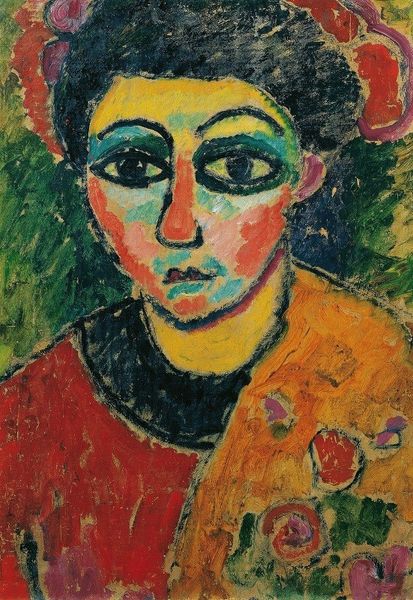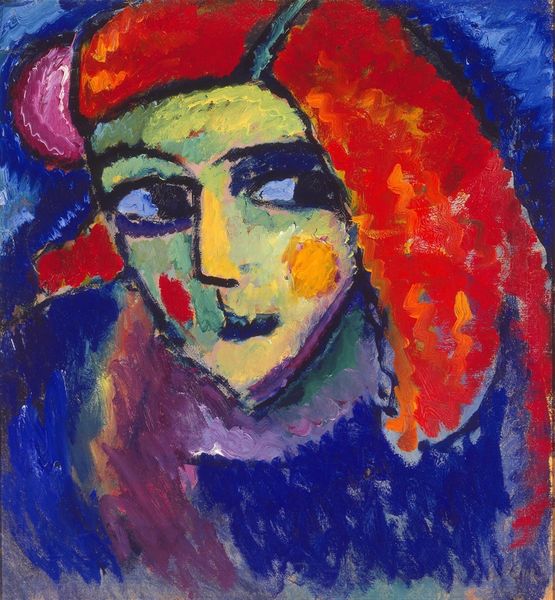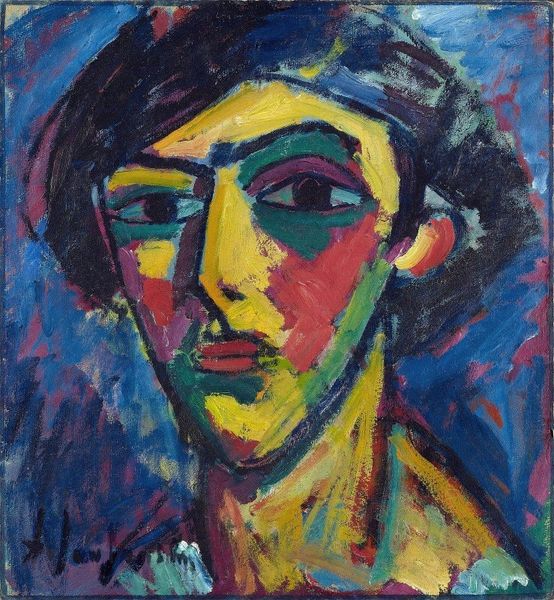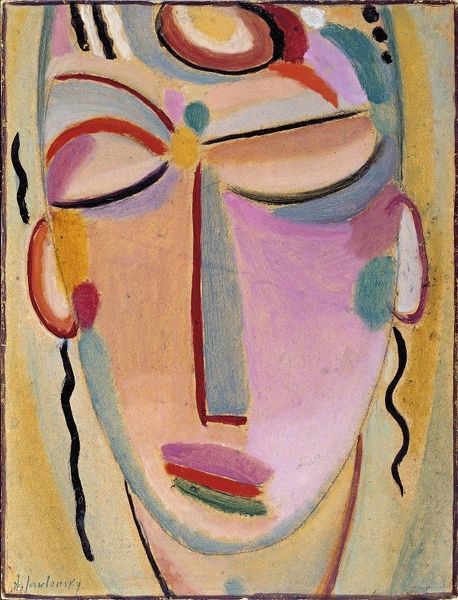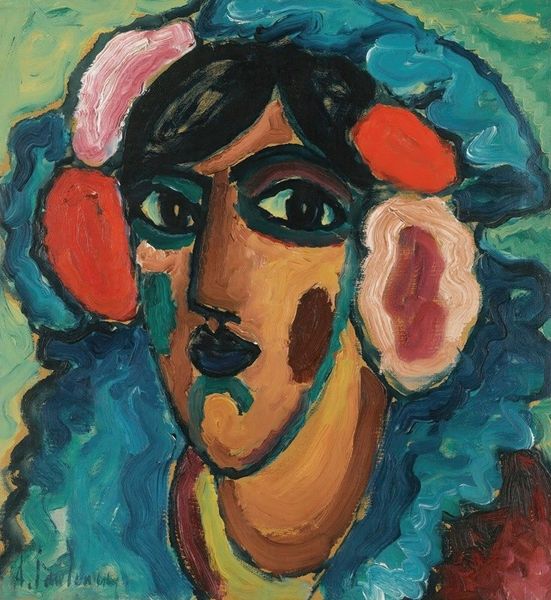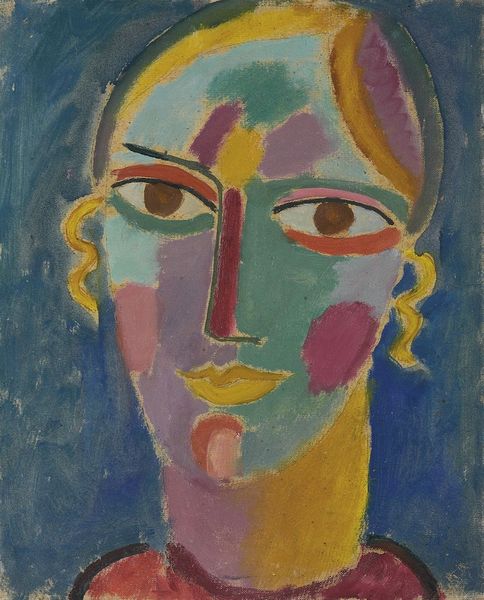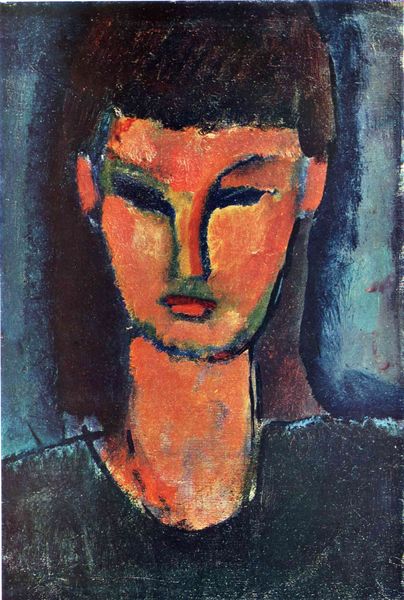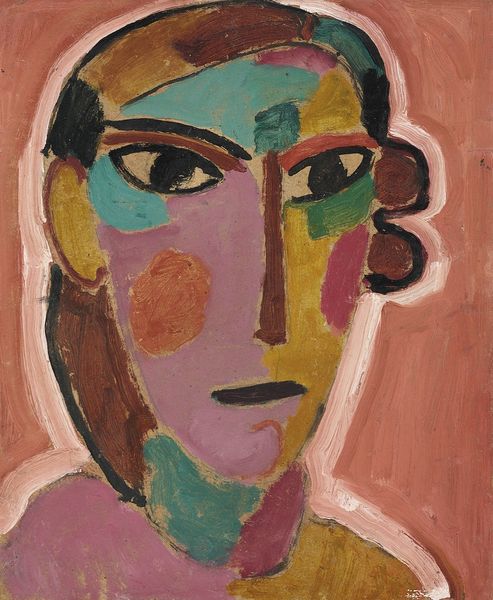
painting, oil-paint
#
portrait
#
figurative
#
painting
#
oil-paint
#
german-expressionism
#
figuration
#
expressionism
#
expressionist
Copyright: Public Domain: Artvee
Editor: This is "The Blue Mantilla" by Alexej von Jawlensky, painted in 1913 using oil paints. There's something striking about the sitter’s intense gaze and the bold colors. How do you interpret this work? Curator: Jawlensky’s "The Blue Mantilla" really resonates with the Expressionist movement's fascination with raw emotion and the subjective experience. Consider the context: pre-World War I Europe, anxieties bubbling beneath the surface. The distorted features and vibrant, almost clashing colors, reflect a society on edge, questioning established norms. Do you notice how the simplified forms almost border on abstraction? Editor: Yes, the face is not realistically rendered; it's almost mask-like, but still very expressive. Curator: Exactly! And let’s consider the mantilla itself. It might allude to traditional representations of women, but Jawlensky reclaims this image. The bold colors and almost aggressive brushstrokes actively disrupt and subvert any notions of passive femininity that were historically linked to such a traditional motif. This begs the question: what happens when traditional symbols intersect with a radical artistic vision? Editor: So, the painting challenges our preconceived ideas, not just of art, but also of societal roles? Curator: Precisely. It’s not just a pretty picture. It's a visual manifesto, a radical reimagining. This painting prompts us to question the established narratives and how power and representation collide on the canvas. What is your final thought? Editor: That art can be a profound mirror reflecting our shared anxieties and inspiring meaningful dialogue around the representation of gender. Curator: Indeed!
Comments
No comments
Be the first to comment and join the conversation on the ultimate creative platform.



